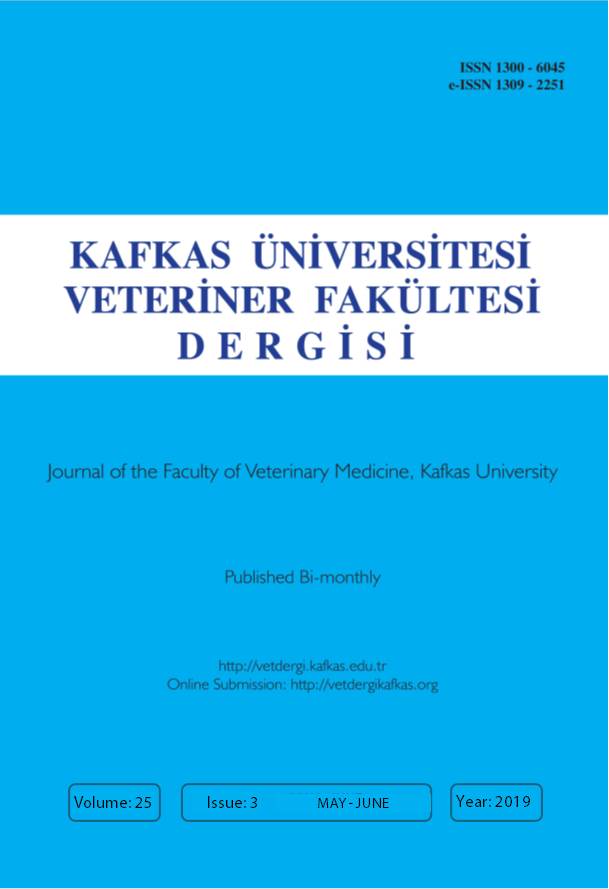
This journal is licensed under a Creative Commons Attribution-NonCommercial 4.0 International License
Kafkas Üniversitesi Veteriner Fakültesi Dergisi
2019 , Vol 25 , Issue 3
Interrelationships of Serum and Colostral IgG (Passive Immunity) with Total Protein Concentrations and Health Status in Lambs
1Departments of Internal Diseases, Faculty of Veterinary Medicine, Kafkas University, TR-36300 Kars - TURKEY2Department of Chemistry, Faculty of Art and Science, Kafkas University, TR-36300 Kars - TURKEY DOI : 10.9775/kvfd.2018.21035 This study was designed to determine relationship between sheep serum before lambing, colostrum and 1-day-old lamb serum total protein (TP) and immunoglobulin-G (IgG) concentration and their effect on neonatal diseases and also the linear relationship between serum TP and IgG concentration (STPC and SIgGC, respectively) in different days of the neonatal period thereby determining the feasibility of TP concentration in the prediction of colostrum quality and passive immunity and to define a cut-off point for STPC and SIgGCat 24 h after birth (STPC-24 and SIgGC-24, respectively) associated with increased risk of illness or death in lambs. For this purpose, blood was obtained from the all lambs at day 1 (n=325), at day 0 (before colostrum intake) and on different days in neonatal periods (n=50) and blood (10-15 days before lambing) and colostrum were obtained from the respective ewes related to the lambs. Mean serum TP and IgG concentrations on days 1, 2, 4, 7, 14 and 28 were significantly higher than values on day 0 (before colostrum intake) from the lambs remained healthy in neonatal period. The STPC-24 was significantly lower in diseased and dead lambs when compared to healthy lambs in the neonatal period (P<0.001 and P<0.001 respectively). The STPC-24 in lambs that died or became ill was 62% to 67% in SIgGC-24, respectively. Mean colostral TPC was significantly (P<0.05) higher in dams (n=254) of healthy lambs when compared to those of sick lambs in neonatal period. There was a significant correlation between the dams" STPC and both the SIgGC in dams and SIgGC-24 in their lambs (R=0.454, R=0.342, respectively). The study revealed that STPC-24 >55 g/L and SIgGC-24>600 mg/ dL is probably consistent with adequate level of passive transfer. It was also noted that in addition to determining colostrum quality, STPC plays an essential role in the prediction and prevention of neonatal diseases in lambs. In conclusion, immediate and inexpensive determination of TP concentrations is beneficial in making timely management and treatment decisions related to failure of passive transfer (FPT). Keywords : Neonatal lamb, Colostrum, Total protein, IgG, Passive transfer failure










